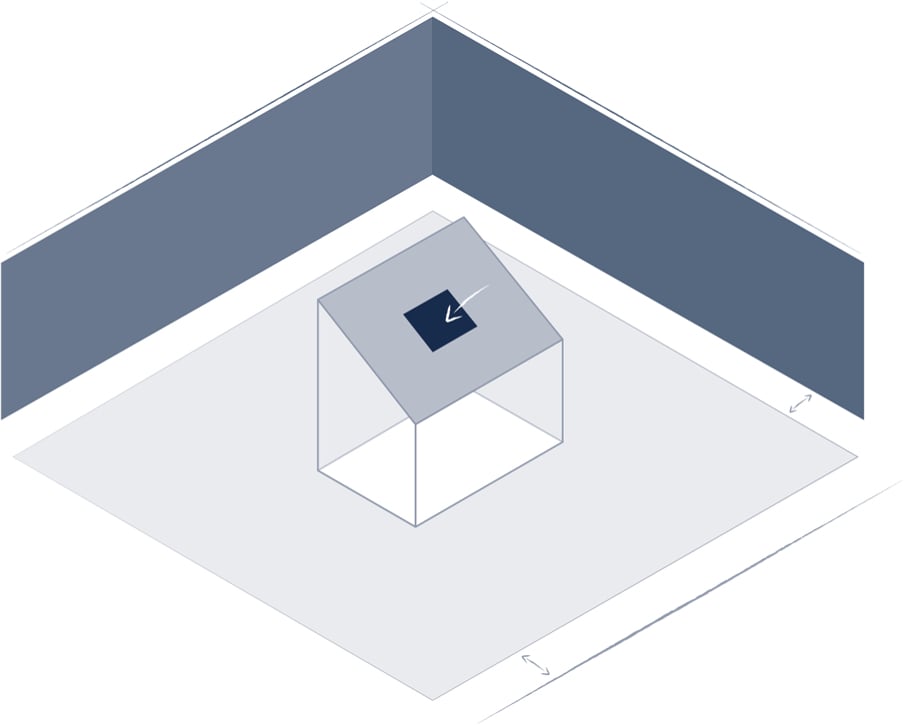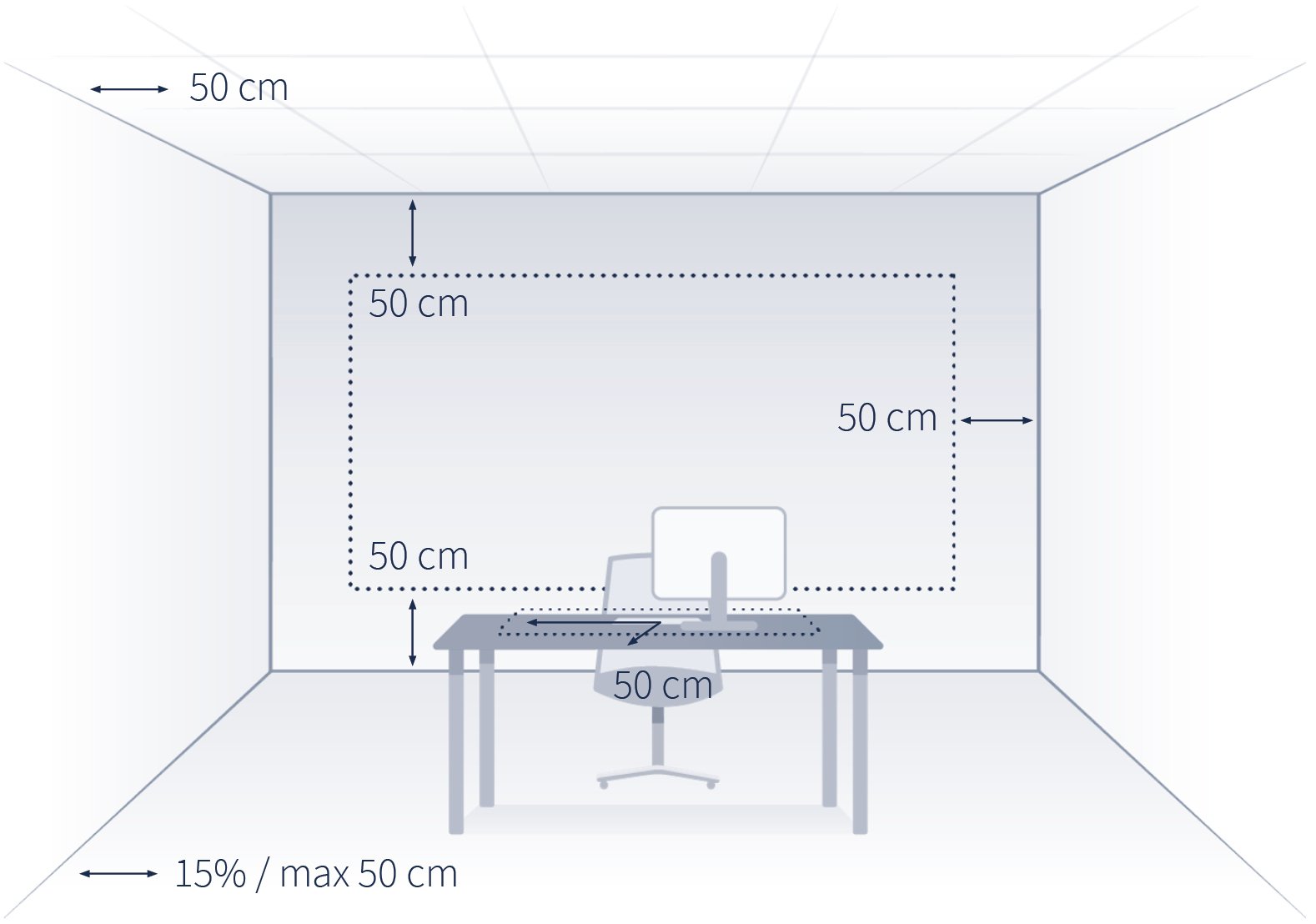Relationship between calculation areas
The requirements in the standard mainly relate to the actual working area. The lighting outside of the working area shall then be adapted to the conditions that apply within the working area. In the new standard, the relationship between these is clearer.


| The working area specified in size and position. Uniformity Uo (min/average) according to collection of statistical tables for the respective vision task. | |
|
|
The immediate surrounding area is specified as a strip of at least 0.5 m around the working area and that is specified by the lighting planner. Uniformity Uo (min/average) > 0.4. |
 |
The peripheral surrounding area is specified as: an area of at least 3 m around the immediate surrounding area or up to a boundary zone of a maximum of 0.5 m from the walls of the room. Uniformity Uo (min./average) > 0.1. Calculated horizontally at floor level. |
Wall zone – the width of the strip that may be excluded around the walls of the room may be 15% of the shortest dimension of the room for smaller rooms, but not more than 0.5 m.
| Illuminance in the working area |
Illuminance within the immediate surroundings |
Illuminance within the peripheral surroundings in relation to the immediate surroundings |
|---|---|---|
| ≥ 750 | 500 | 1/3 |
| 500 | 300 | 1/3 |
| 300 | 200 | 1/3 |
| 200 | 150 | 1/3 |
| 150 | Eworking area | 1/3 |
| 100 | Eworking area | 1/3 |
| ≤ 50 | Eworking area | 1/3 |
| Uniformity within the working area depending on the visual task and activity. Uniformity in the immediate surroundings: min/avg at least 0.4. Uniformity in the peripheral surroundings: min/avg at least 0.1. | ||

